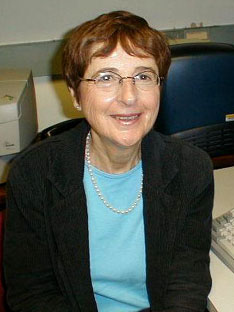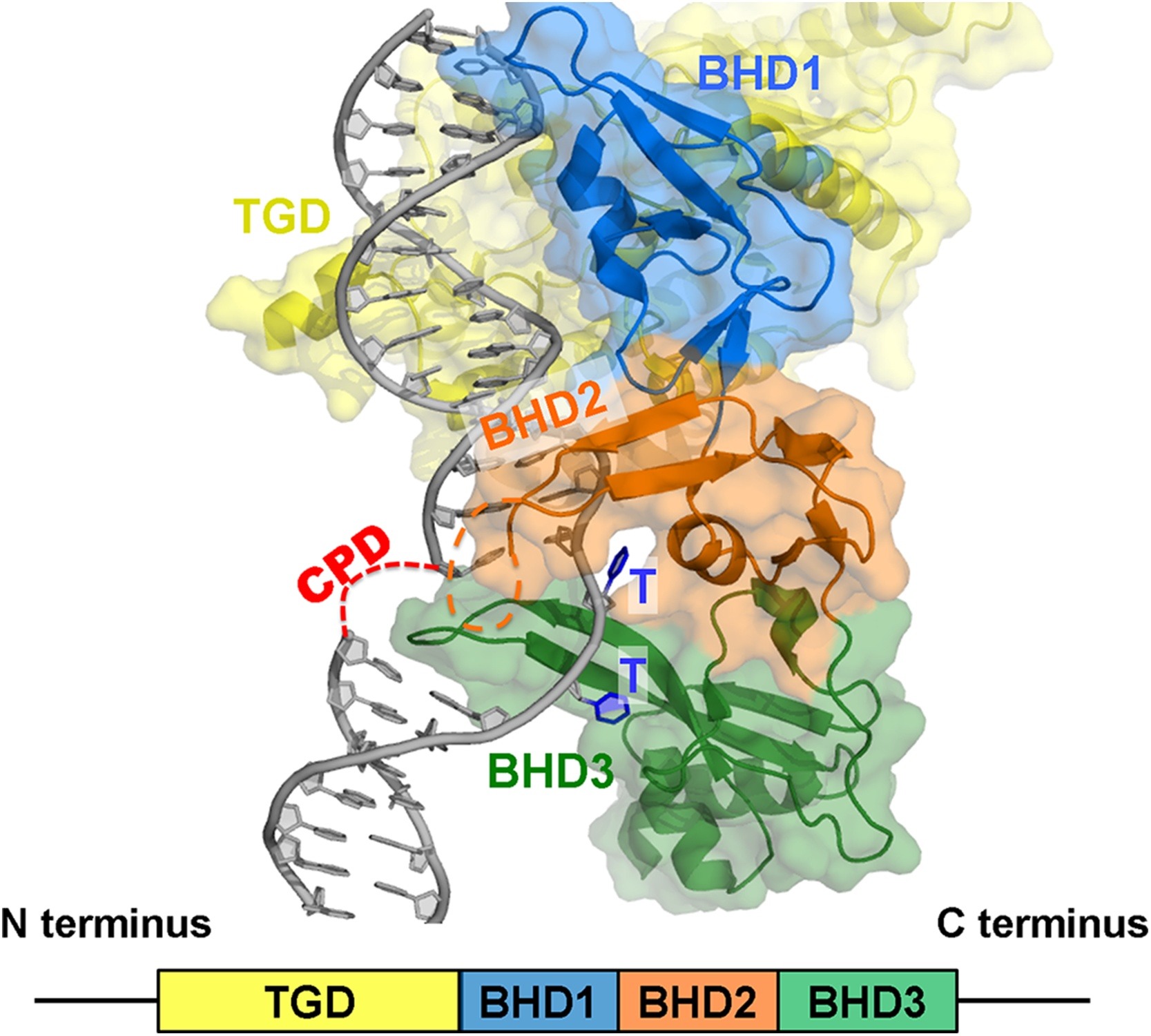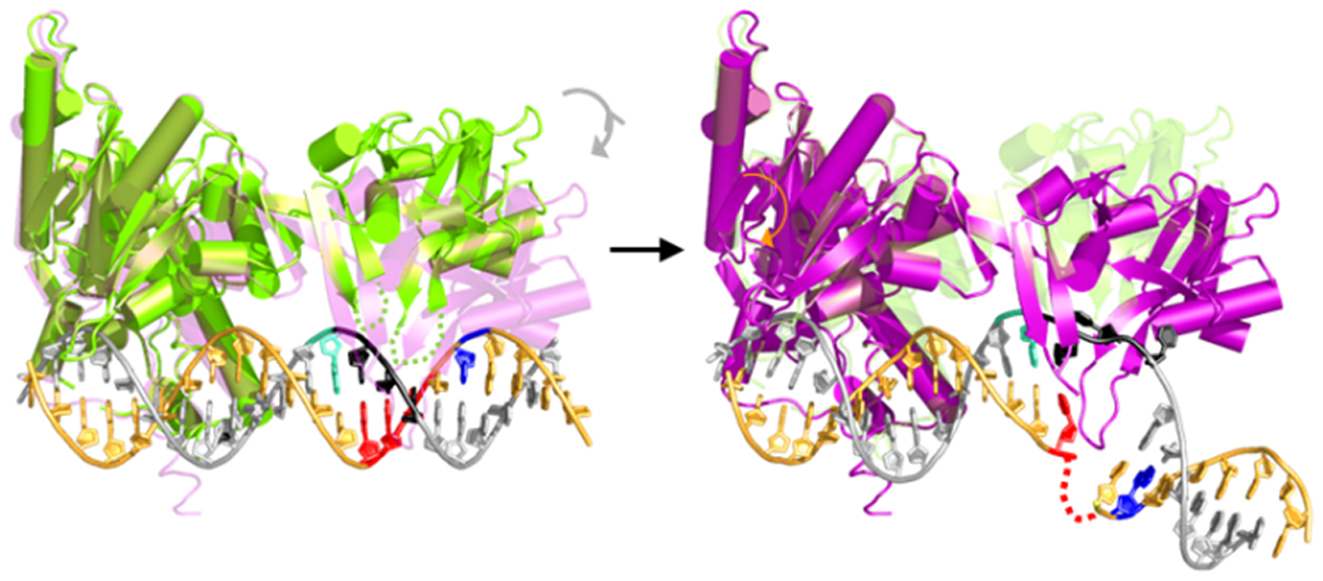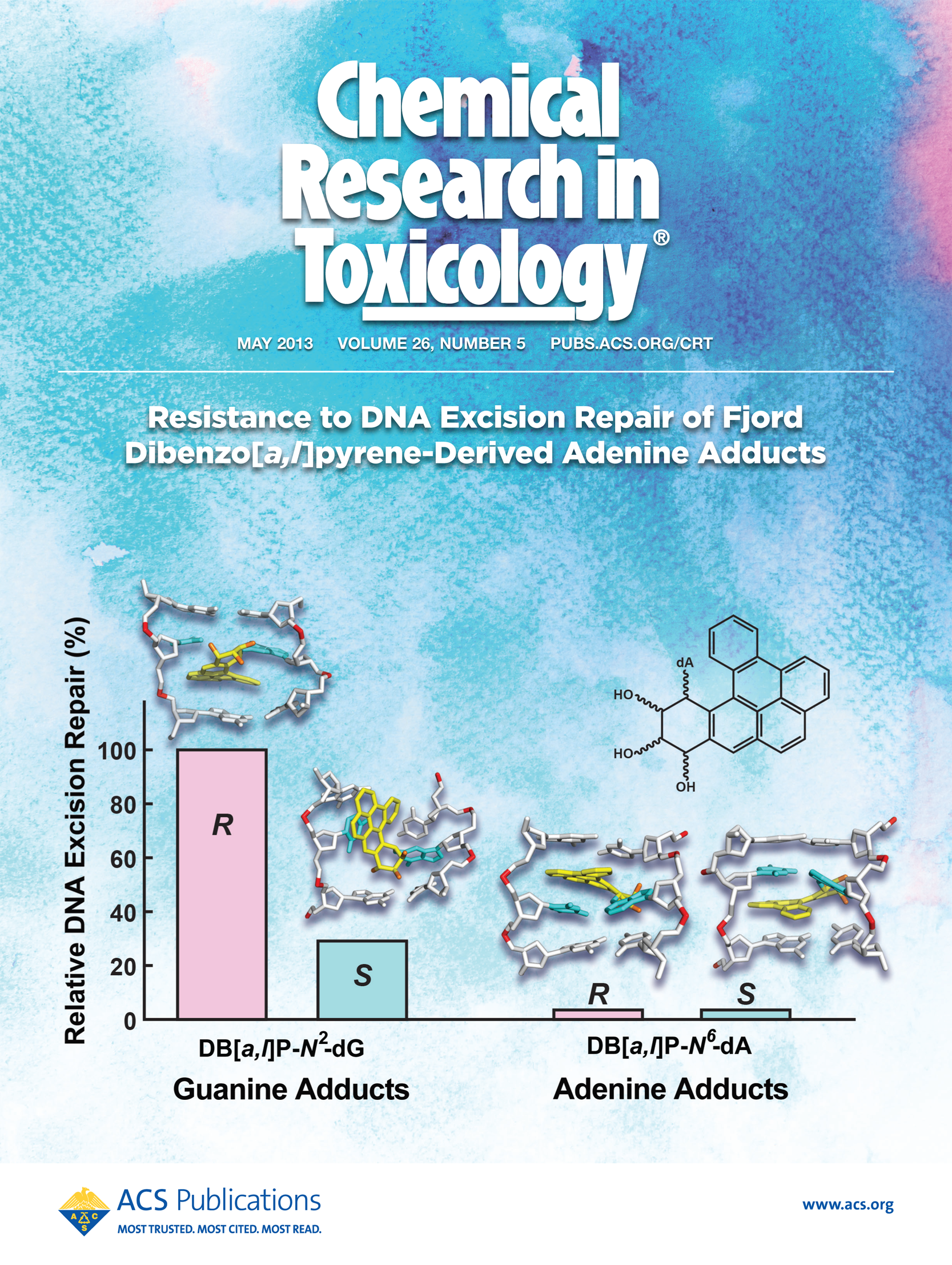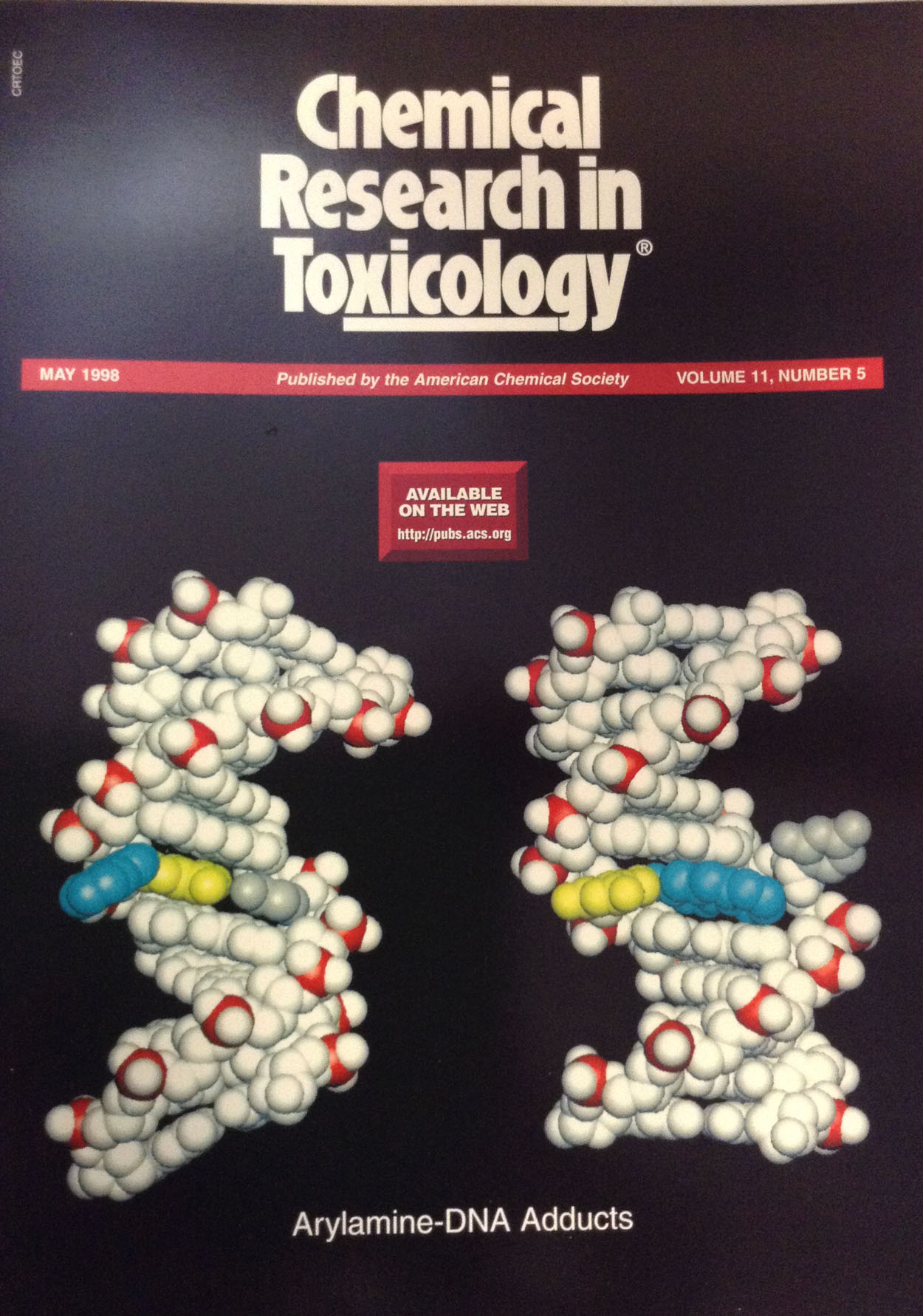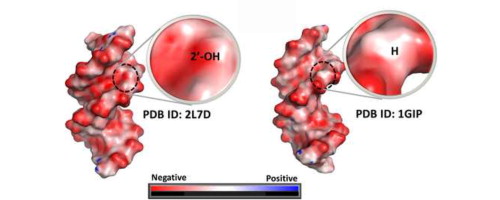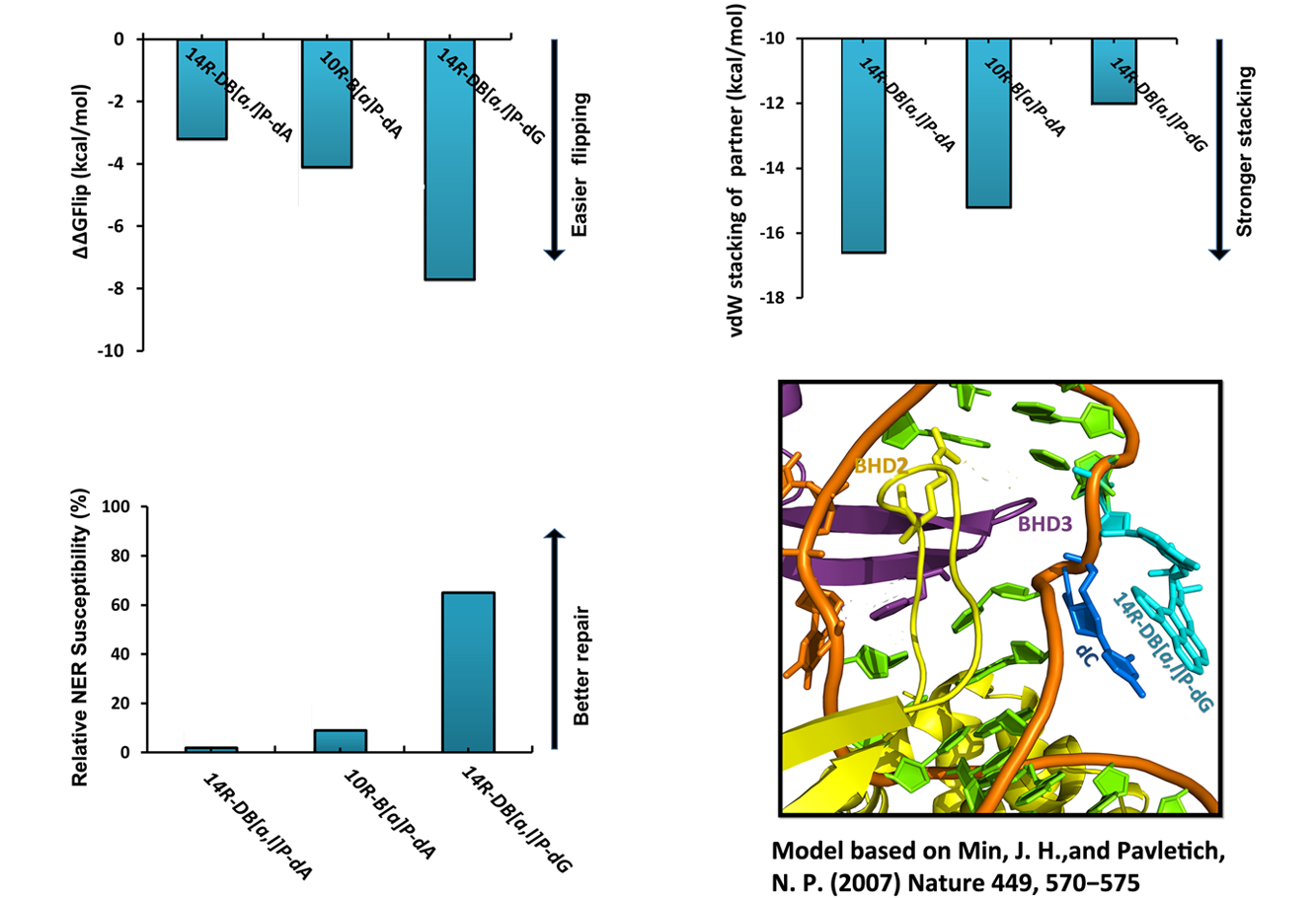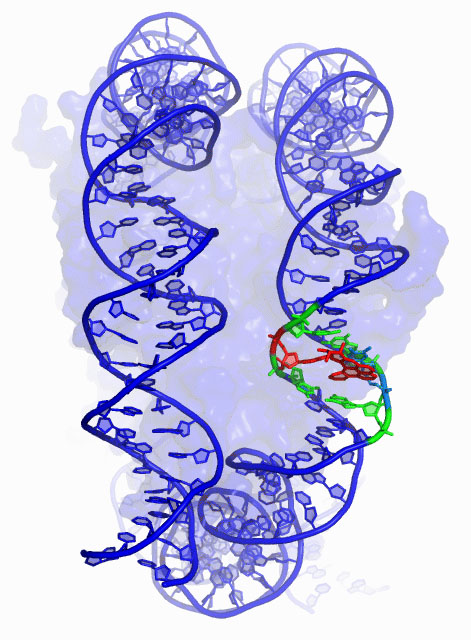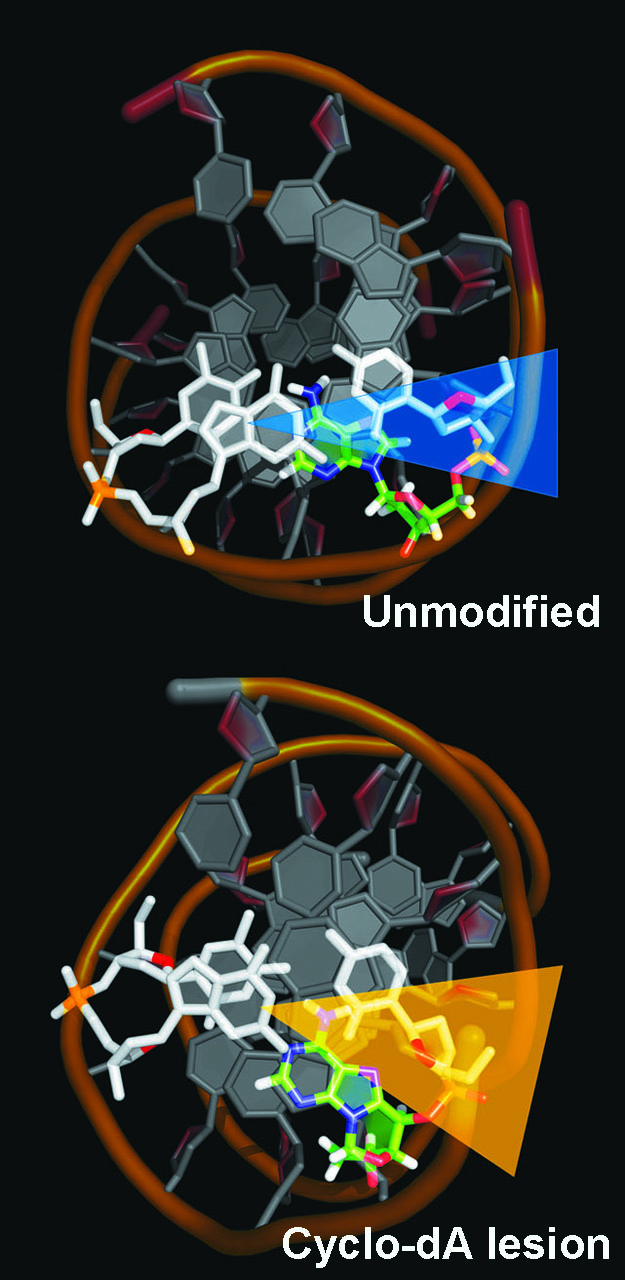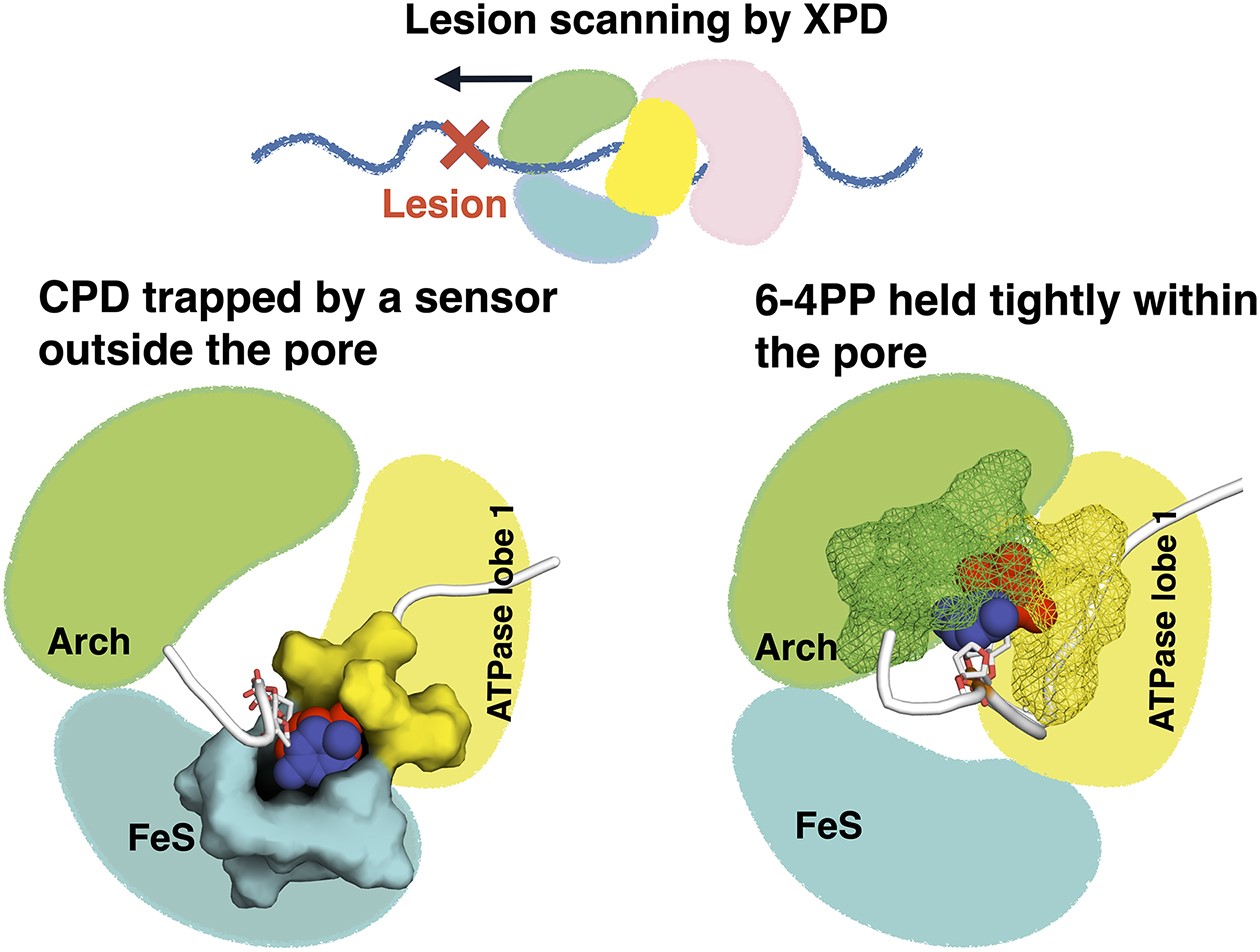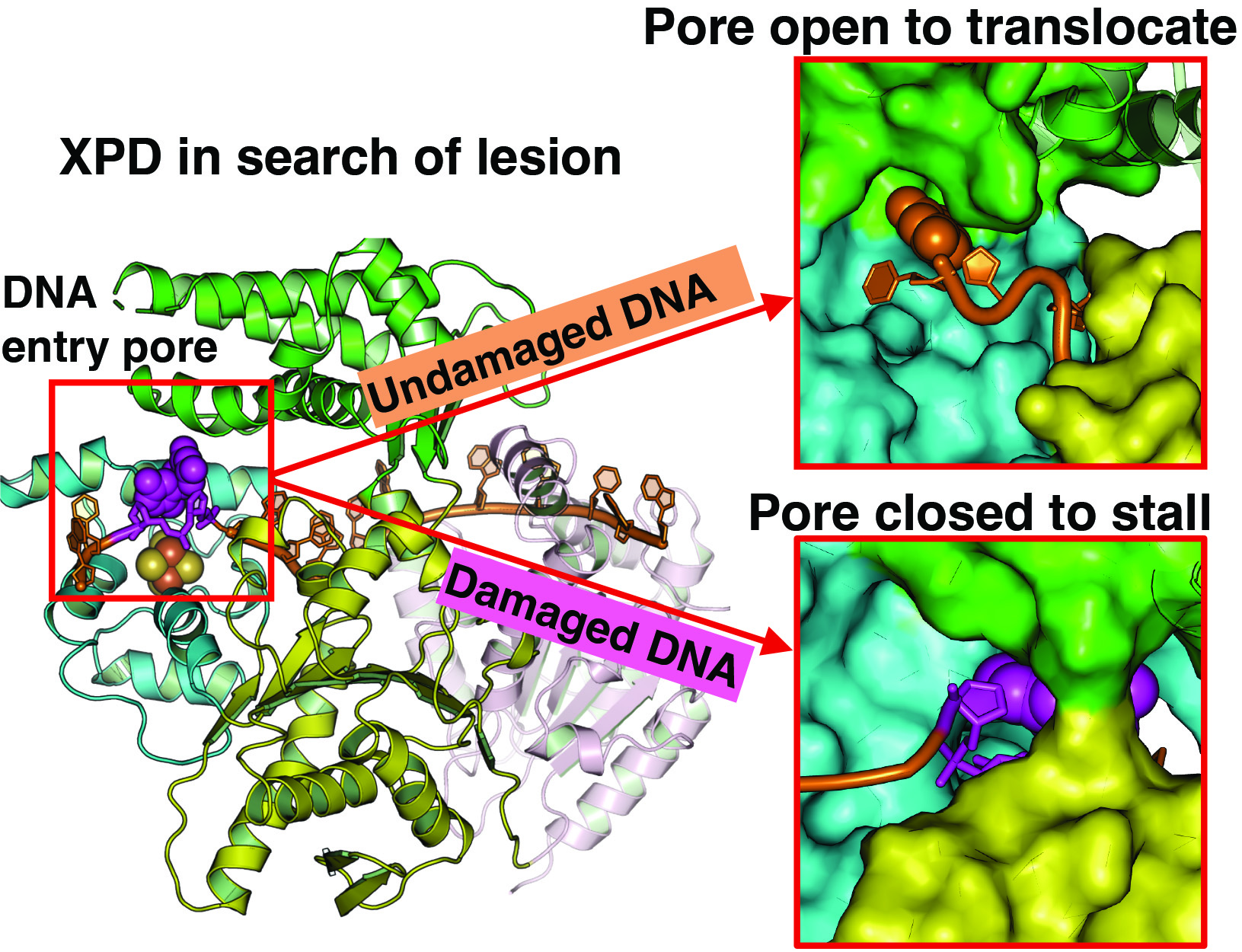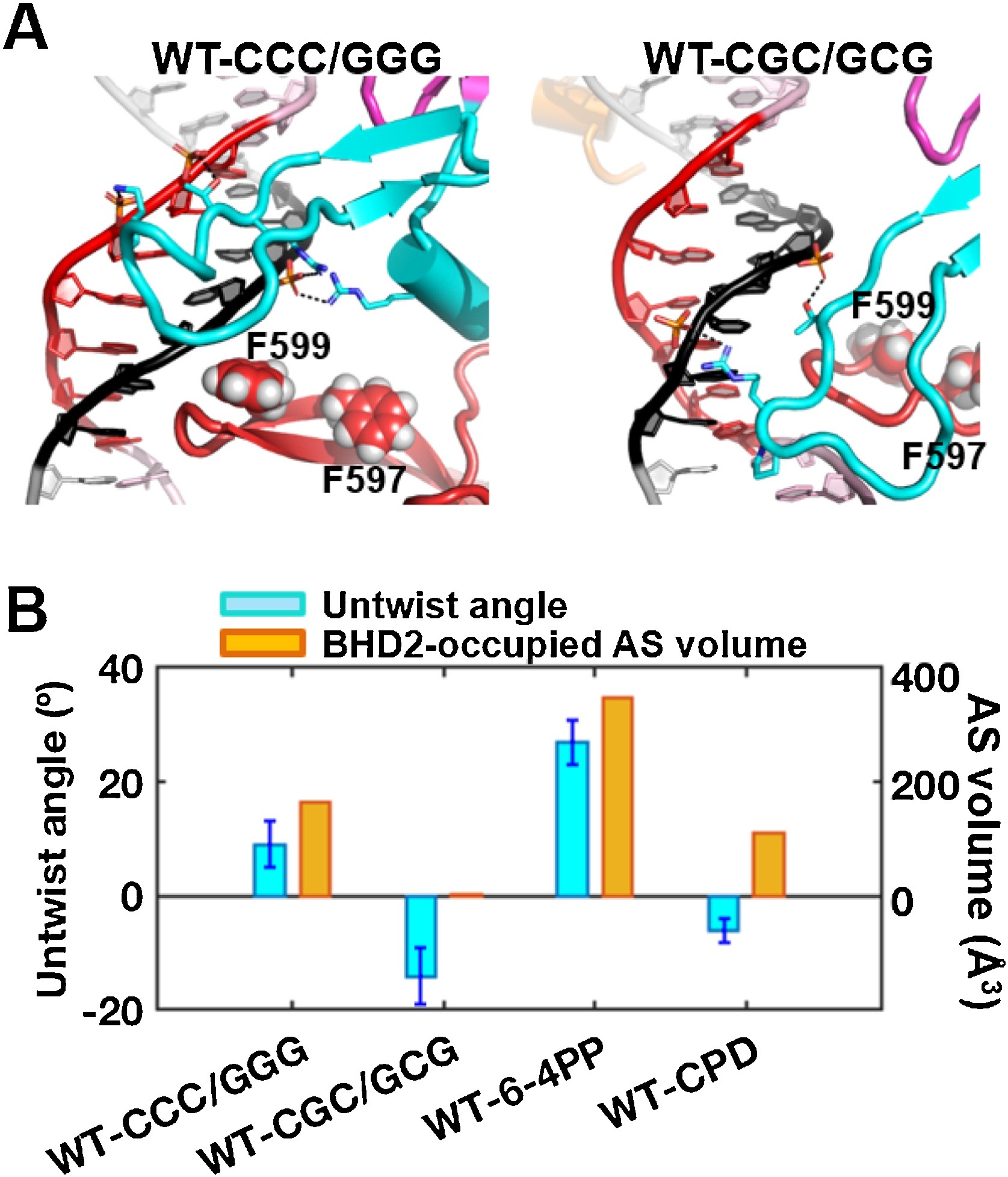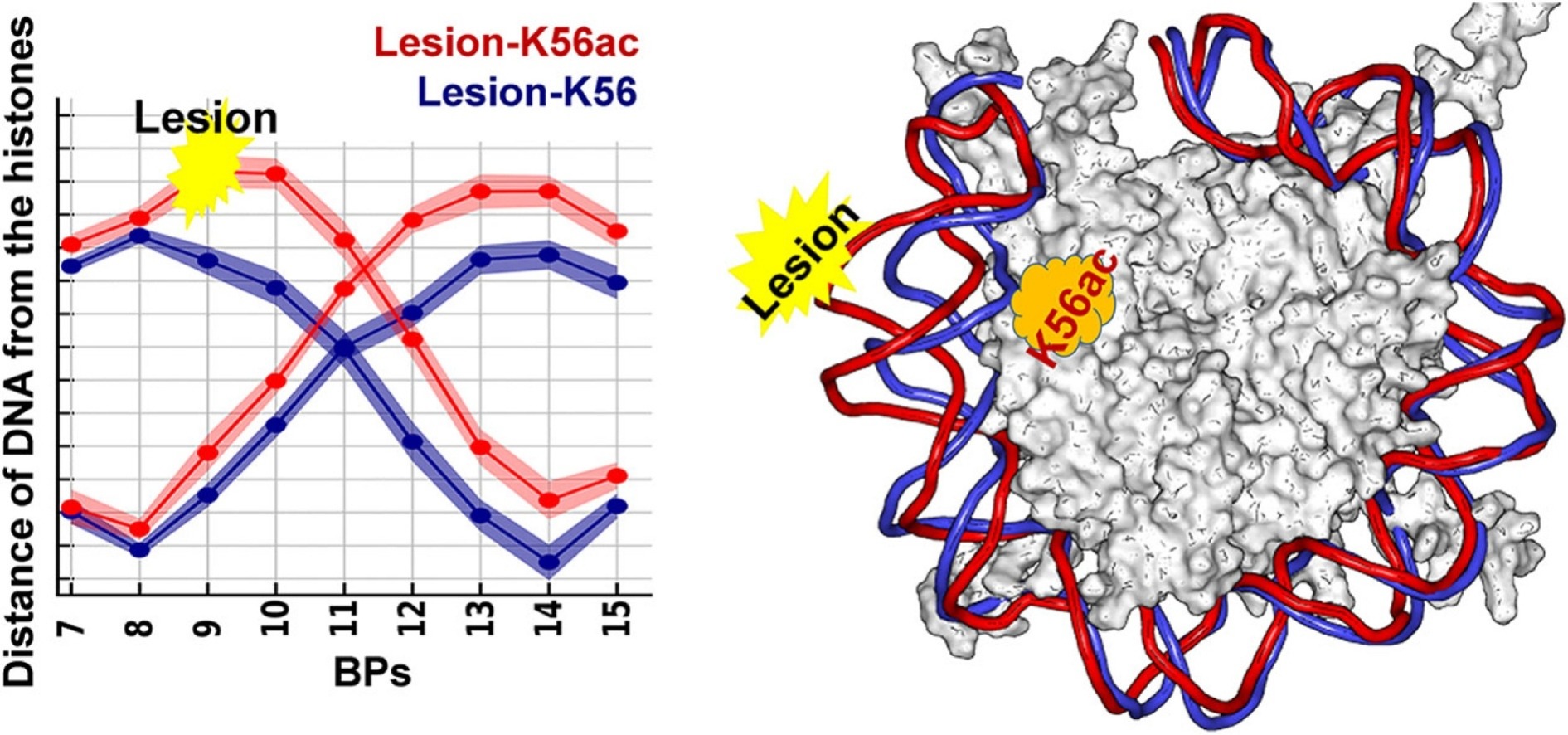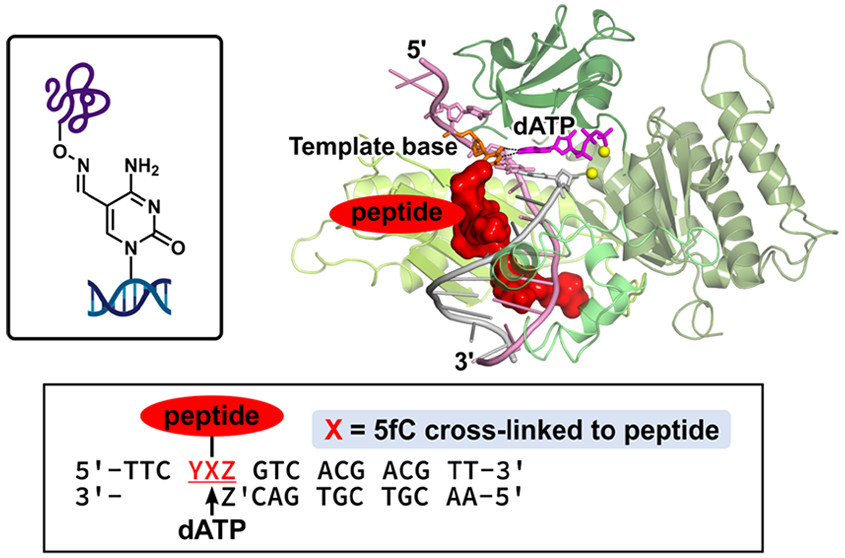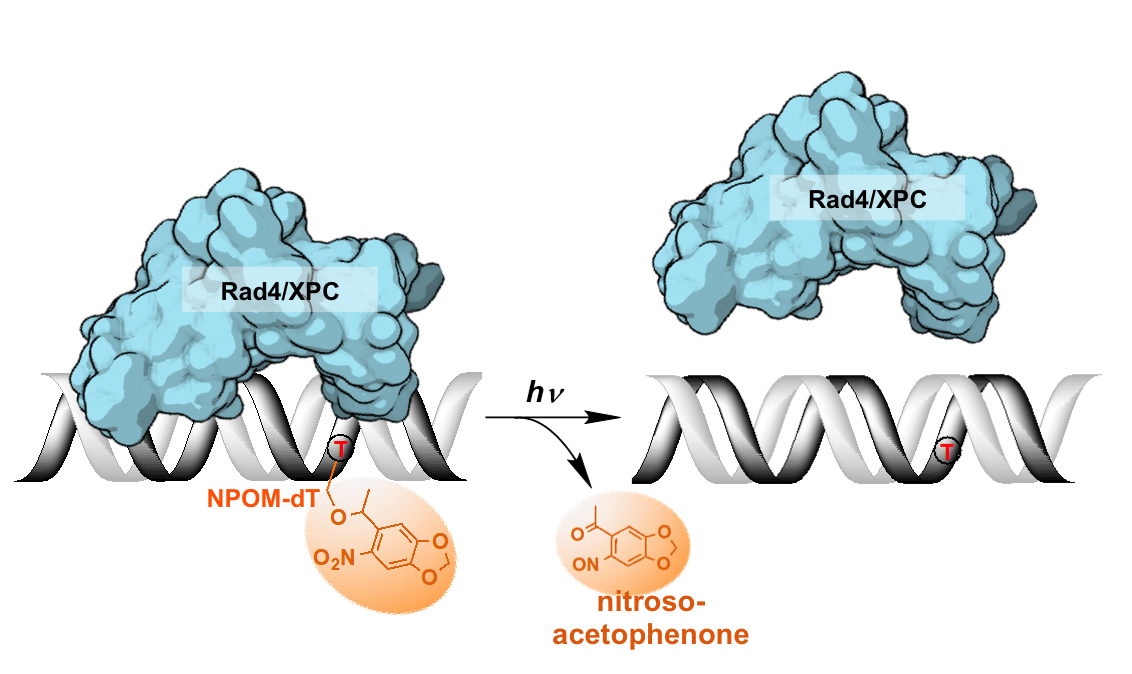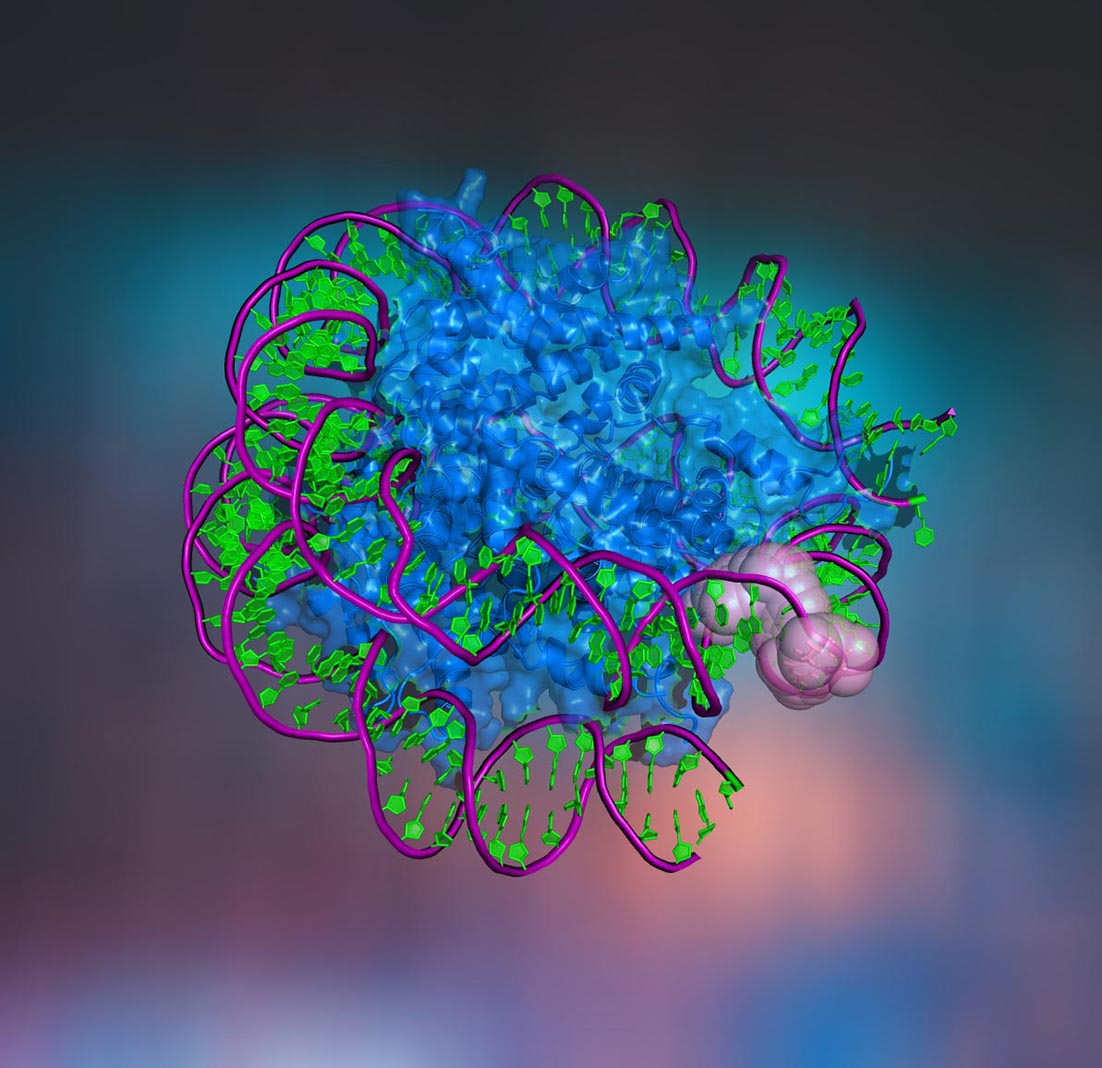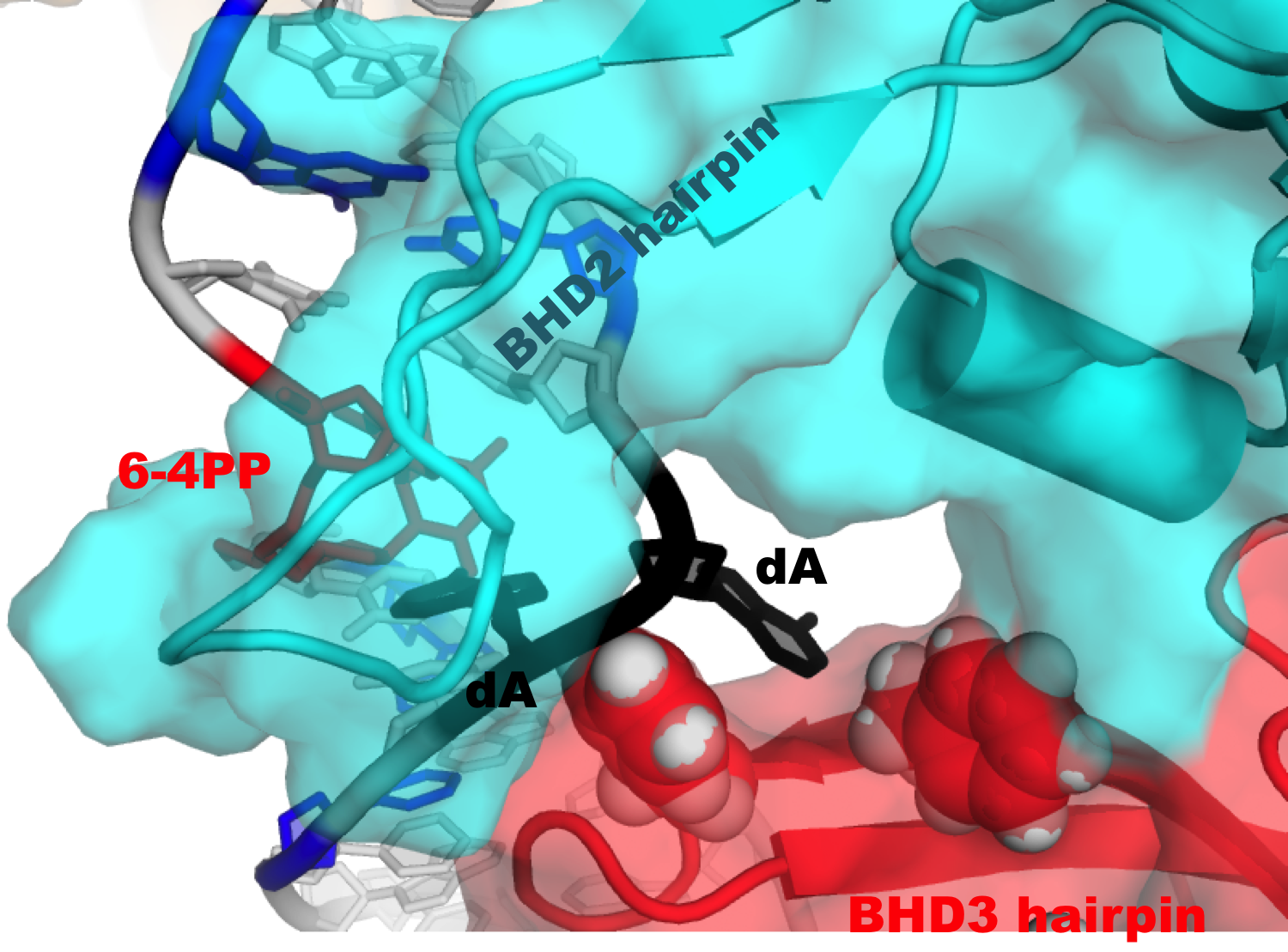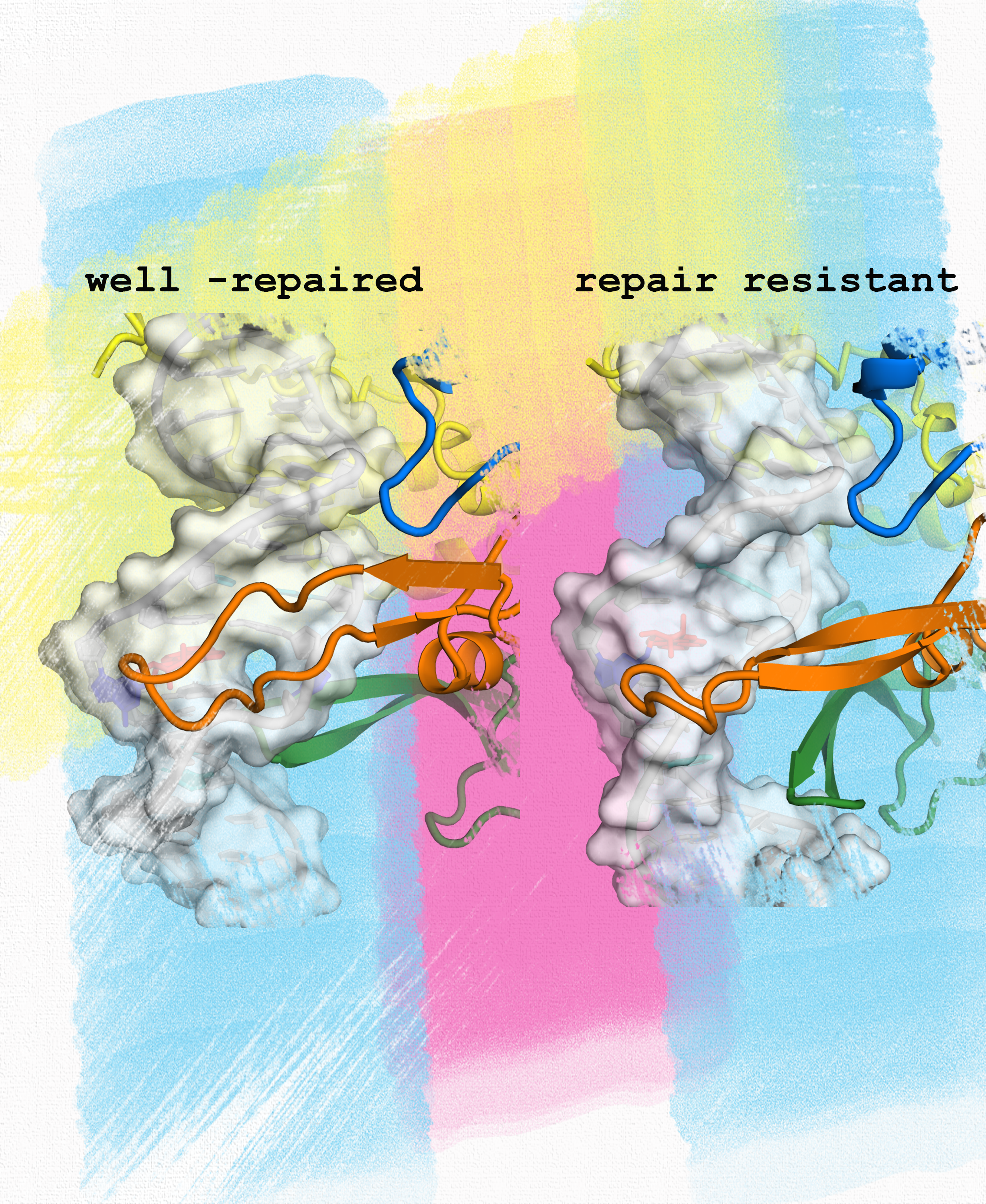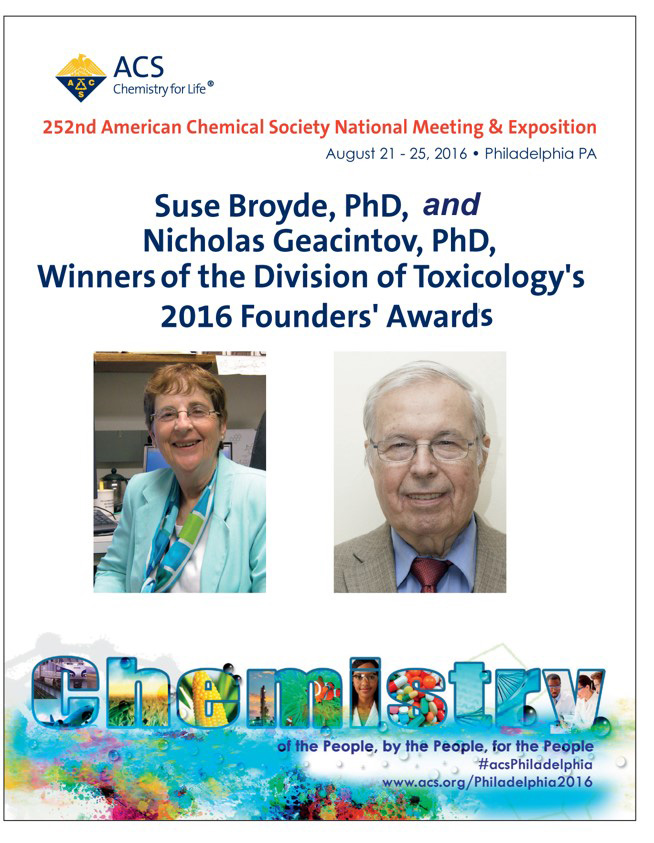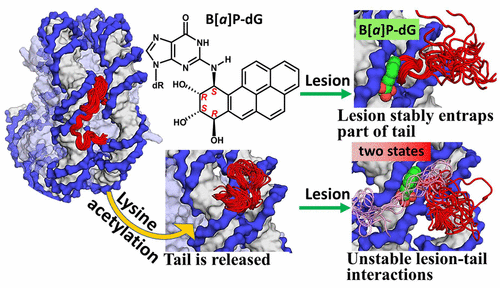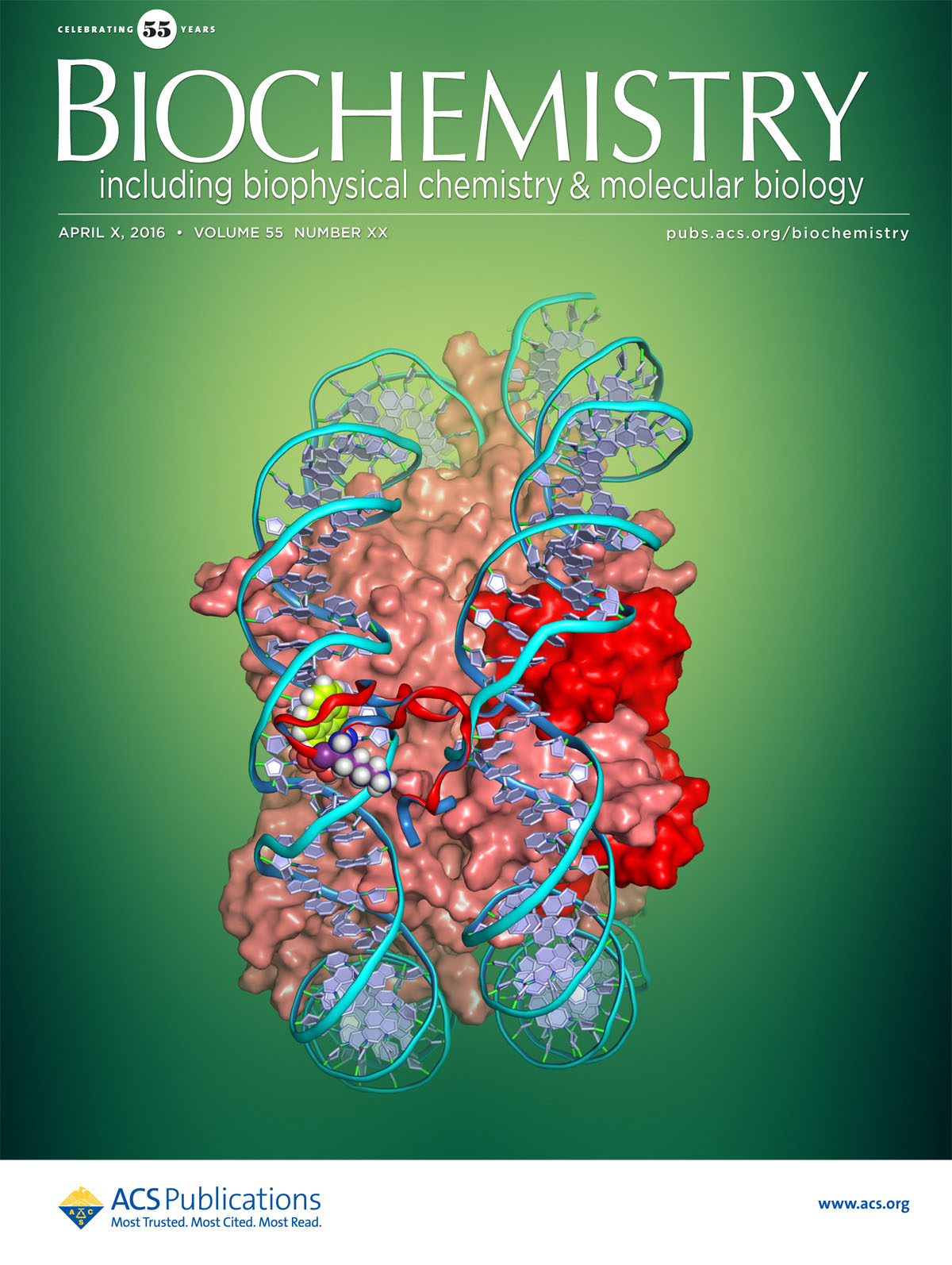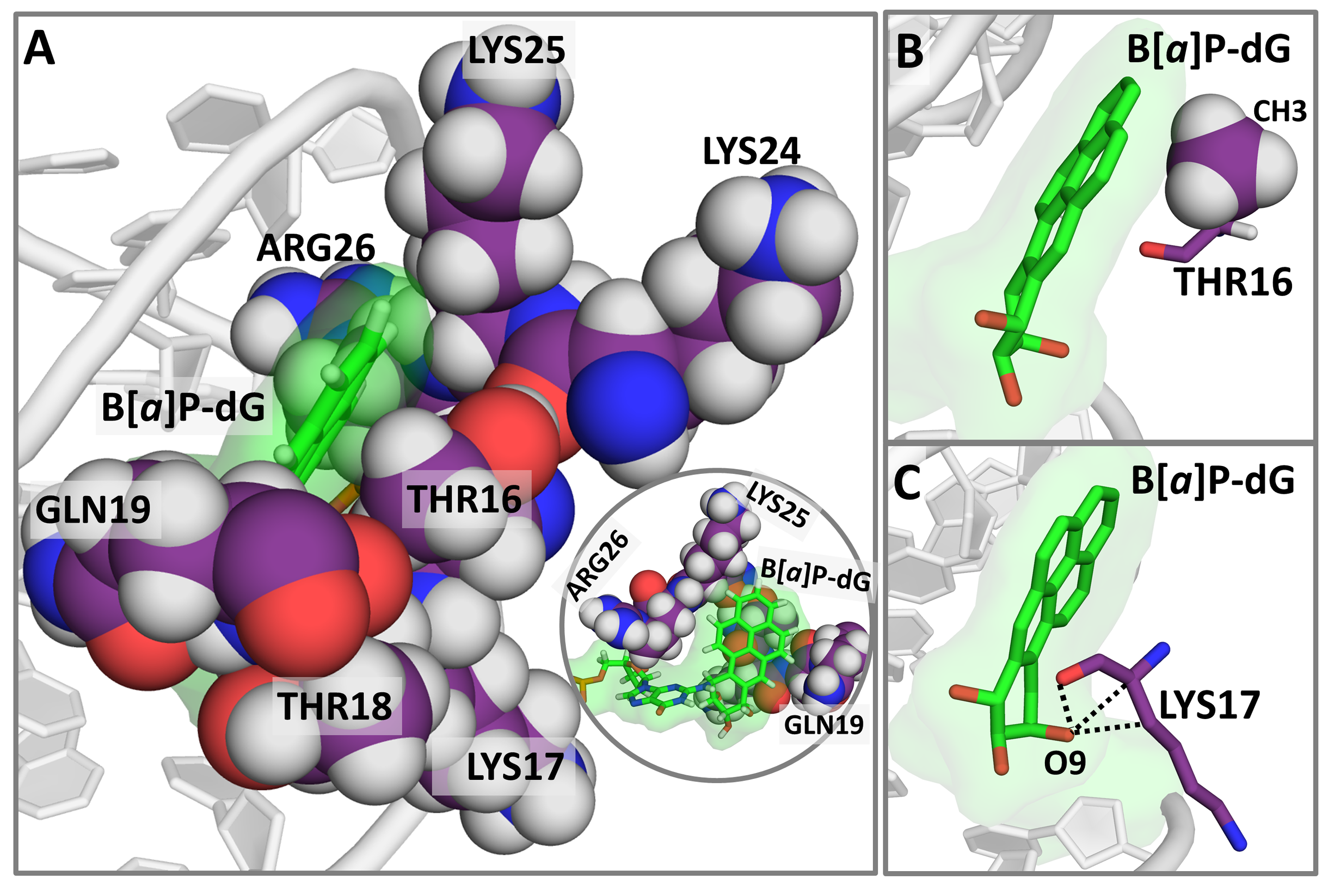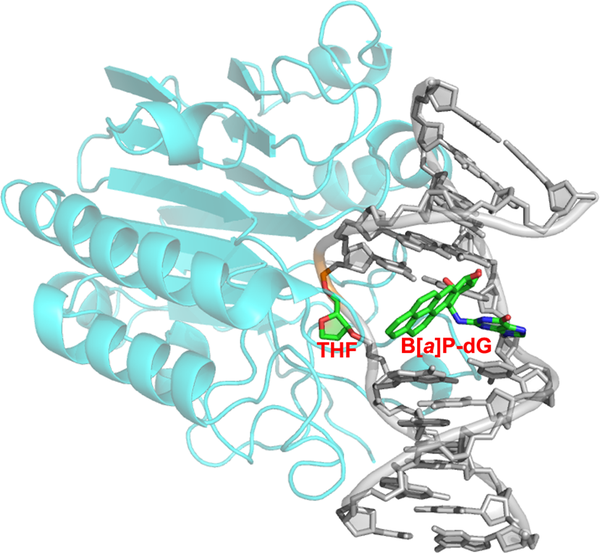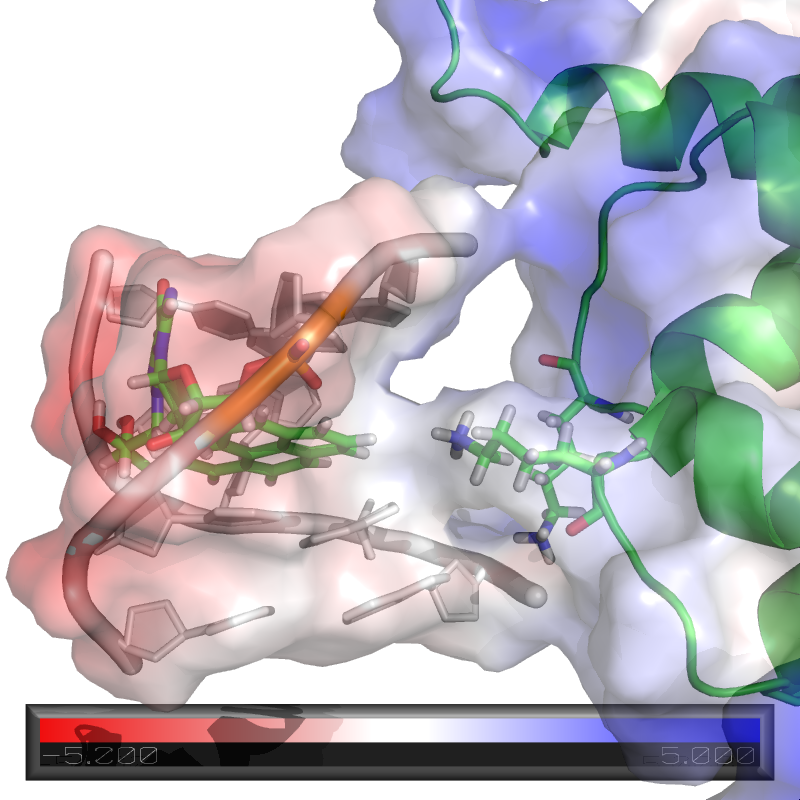|
Areas of interest: We are focused on delineating the molecular mechanisms underlying the mutagenic and carcinogenic properties of environmental and endogenous carcinogens. These include polycyclic aromatic carcinogens, present in automobile exhaust, tobacco smoke and cooked foods as well as reactive oxygen species. These can react with DNA to damage it. This damaged DNA may initiate cancer by producing mutations during DNA replication. Our research centers on investigating replication and repair of the damaged DNA, using computational approaches to study large macromolecular systems involving these protein-DNA complexes. We employ computer modeling, molecular mechanics and dynamics simulations and quantum mechanical calculations for structural, dynamic and thermodynamic analyses to connect these properties with biological function. |
Dr. Suse Broyde (email: broyde_AT_nyu.edu)
Cover image courtesy of Wiley-VCH
Courtesy of Dr.Hong Mu
(Click to download movie) Mu H, Geacintov NE, Broyde S, Yeo JE, Scharer OD.DNA Repair (Amst). 2018 Aug 23. pii: S1568-7864(18)30170-8. doi: 10.1016/j.dnarep.2018.08.005.
Courtesy of Dr.Hong Mu Chakraborty S, Steinbach PJ, Paul D, Mu H, Broyde S, Min JH, Ansari A. Nucleic Acids Res. 2018 Feb 16;46(3):1240-1255. doi: 10.1093/nar/gkx1216.
Courtesy of Dr.Jin Yang Yang J, Lior-HOffmann L, Wang S, Zhang Y, Broyde S. Biochemistry 2013 Apr 23;52(16):2828-38.
Courtesy of Dr.Yuqin Cai
Adenine-DNA adducts derived from the highly tumorigenic dibenzo[a,l]pyrene are resistant to nucleotide excision repair while guanine adducts are not Kropachev K, Kolbanovskiy M, Liu Z, Cai Y, Zhang L, Schwaid AG, Kolbanovskiy A, Ding S, Broyde S, and Geacintov NE Chem. Res. Toxicol. 2013 26(5):783-93
Cover image courtesy of Chemical Research in Toxicology
Nuclear magnetic resonance solution structures of covalent aromatic amine-DNA adducts and their mutagenic relevance.
Patel DJ, Mao B, Gu Z, Hingerty BE, Gorin A, Basu AK, Broyde S. Chem Res Toxicol. 1998 May;11(5):391-407. Invited Review Article
Cover image courtesy of Chemical Research in Toxicology NMR solution structures of stereoisometric covalent polycyclic aromatic carcinogen-DNA adduct: principles, patterns, and diversity. Geacintov NE, Cosman M, Hingerty BE, Amin S, Broyde S, Patel DJ. Chem Res Toxicol. 1997 Feb;10(2):111-46.
Cover image courtesy of Nucleic Acids Research
Exocyclic amino groups of flanking guanines govern sequence-dependent adduct conformations and local structural distortions for minor groove-aligned benzo[a]pyrenyl-guanine lesions in a GG mutation hotspot context. Rodriguez FA, Cai Y, Lin C, Tang Y, Kolbanovskiy A, Amin S, Patel DJ, Broyde S, Geacintov NE. Nucleic Acids Res. 2007;35(5):1555-68. Cover image courtesy of Nucleic Acids Research
Wang L, Broyde S.Nucleic Acids Res. 2006 Feb 1;34(3):785-95.
Courtesy of Dr.Hong Mu
The relationships between XPC binding to conformationally diverse DNA adducts and their excision by the human NER system: Is there a correlation? Lee YC, Cai Y, Mu H, Broyde S, Amin S, Chen X, Min JH, Geacintov NE, DNA Repair (Amst). DNA Repair (Amst). 2014 Jul;19:55-63.
Courtesy of Dr. Shuang Ding and Dr.Yuqin Cai
Nuclear magnetic resonance solution structure of an N(2)-guanine DNA adduct derived from the potent tumorigen dibenzo[a,l]pyrene: intercalation from the minor groove with ruptured Watson-Crick base pairing Tang Y., Liu Z., Ding S., Lin CH, Cai Y., Rodriguez FA, Sayer JM, Jerina DM, Amin S., Broyde S.,and Geacintov NE. Biochemistry 2012 51 (48)9751-62 Courtesy of Dr.Hong Mu The role of structural and energetic factors in regulating repair of a bulky DNA lesion with different opposite partner bases
(Click to download movie)
(Click to download movie)
(Click to download movie) Courtesy of Dr. Yuqin Cai Cai Y, Zheng H, Ding S, Kropachev K,Schwaid AG,Tang Y, Mu H, Wang S, Geacintov NE, Zhang Y, Broyde S. Chem. Res. Toxicol. 2013 26(7):1115-25
(Click to download movie) Y. Cai, L.Wang, S. Ding, A. Schwaid, N.E. Geacintov and S. Broyde. Biochemistry, 2010 49(46):9943-45. Courtesy of Dr. Yuqin Cai Kropachev K, Ding S, Terzidis MA, Masi A, Liu Z, Cai Y, Kolbanovskiy M, Chatgilialoglu C, Broyde S, Geacintov NE, Shafirovich V. DNA Repair (Amst). Nucleic Acids Res. 2014 Apr;42(8):5020-32.
|
|
Courtesy of Dr. Iwen Fu (Click image to enlarge)
Differing structures and dynamics of two photolesions portray verification differences by the human XPD helicase Fu I, Geacintov NE, Broyde S. Nucleic Acids Research 2023 Advance Article, published Nov 2 2023.
https://doi.org/10.1093/nar/gkad974
Courtesy of Dr. Ana H. Sales (Click image to enlarge)
Inhibition of E. coli RecQ Helicase Activity by Structurally Distinct DNA Lesions: Structure-Function Relationships Sales AH, Zheng V, Kenawy MA, Kakembo M, Zhang L, Shafirovich V, Broyde S, Geacintov NE. Int. J. Mol. Sci. 2022, 23:15654.
https://doi.org/10.3390/ijms232415654
Courtesy of Dr. Iwen Fu (Click image to enlarge)
Mechanism of lesion verification by the human XPD helicase in nucleotide excision repair Fu I, Mu H, Geacintov NE, Broyde S. Nucleic Acids Research 2022 Advance Article, published Jun 17 2022.
https://doi.org/10.1093/nar/gkac496
Courtesy of Dr. Hong Mu (Click image to enlarge)
Impact of DNA sequences on DNA 'opening' by the Rad4/XPC nucleotide excision repair complex Paul D, Mu H, Tavakoli A, Dai Q, Chakraborty S, He C, Ansari A, Broyde S, Min JH. DNA Repair (Amst). 2021 107:103194.
https://doi.org/10.1016/j.dnarep.2021.103194
Courtesy of Dr. Iwen Fu (Click image to enlarge)
Molecular dynamics simulations reveal how H3K56 acetylation impacts nucleosome structure to promote DNA exposure for lesion sensing Fu I, Geacintov NE, Broyde S. DNA Repair (Amst). 2021 107:103201
https://doi.org/10.1016/j.dnarep.2021.103201
Courtesy of Dr. Iwen Fu (Click image to enlarge)
Translesion Synthesis Past 5-Formylcytosine-Mediated DNA-Peptide Cross-Links by hPolη Is Dependent on the Local DNA Sequence Thomforde J, Fu I, Rodriguez F, Pujari SS, Broyde S, and Tretyakova N. Biochemistry 2021 60 (23), 1797-1807
https://doi.org/10.1021/acs.biochem.1c00130
Courtesy of Dr.Hong Mu (Click image to enlarge)
Light-induced modulation of DNA recognition by the Rad4/XPC damage sensor protein Tavakoli A, Paul D, Mu H, Kuchlyan J, Baral S, Ansari A, Broyde S, and Min JH. RSC Chem. Biol., 2021, Advance Article, published 19 Jan 2021
https://doi.org/10.1039/d0cb00192a
Courtesy of Dr.Hong Mu (Click image to enlarge)
Tethering-facilitated DNA 'opening' and complementary roles of ß-hairpin motifs in the Rad4/XPC DNA damage sensor protein Paul D, Mu H, Tavakoli A, Dai Q, Chen X, Chakraborty S, He C, Ansari A, Broyde S, and Min JH. Nucleic Acids Res. 2020
https://doi.org/10.1093/nar/gkaa909
Click to download Movie S1
Click to download Movie S2
Courtesy of Dr.Hong Mu (Click image to enlarge)
The DNA Damage-Sensing NER Repair Factor XPC-RAD23B Does Not Recognize Bulky DNA Lesions with a Missing Nucleotide Opposite the Lesion Feher KM, Kolbanovskiy A, Durandin A, Shim Y, Min JH, Lee YC, Shafirovich V, Mu H, Broyde S and Geacintov NE. DNA Repair.
https://doi.org/10.1016/j.dnarep.2020.102985
Courtesy of Dr.Hong Mu (Click image to enlarge)
Impact of DNA sequences in the DNA duplex opening by the Rad4/XPC nucleotide excision repair complex Paul D, Mu H, Dai Q, Tavakoli A, He C, Broyde S and Min JH, doi: https://doi.org/10.1101/2020.01.16.909549
#bioRxiv
Click to download Movie S1
Click to download Movie S2
Courtesy of Dr.Yuqin Cai (Click image to enlarge)
Variable impact of conformationally distinct DNA lesions on nucleosome structure and dynamics: Implications for nucleotide excision repair Yuqin Cai, Nicholas E. Geacintov, Suse Broyde. DNA Repair (2020) 87, 102768.
https://doi.org/10.1016/j.dnarep.2019.102768
Click to download Movie S1
Click to download Movie S2
Courtesy of Dr.Hong Mu (Click image to enlarge)
Structure and mechanism of pyrimidine-pyrimidone (6-4) photoproduct recognition by the Rad4/XPC nucleotide excision repair complex Paul H, Mu H, Zhao H, Ouerfelli O, Jeffrey PD, Broyde S and Min JH, Nucleic Acids Research (2019) 47, 6015-6028
https://doi.org/10.1093/nar/gkz359
Click to download Movie S1
Click to download Movie S2
Courtesy of Dr.Iwen Fu (Click image to enlarge) Rotational and translational positions determine the structural and dynamic impact of a single ribonucleotide incorporated in the nucleosome Iwen Fu, Duncan J Smith and Suse Broyde, DNA Repair (Amst). 2018 Nov 29. pii: S1568-7864(18)30291-X. doi: 10.1016/j.dnarep.2018.11.012. Click to download the PDF file of Just Accepted version of this paper
Click to download Movie S1
Courtesy of Dr.Hong Mu (Click image to enlarge)
Lesion sensing during initial binding by yeast XPC/Rad4: toward predicting resistance to nucleotide excision repair Mu H, Zhang Y, Geacintov NE, and Broyde S, Chem. Res. Toxicol. 2018. DOI: 10.1021/acs.chemrestox.8b00231
Publication Date (Web): October 4, 2018 ACS Editors' Choice; Featured on Cover
Click to download Movie S1
Click to download Movie S2
Click to download Movie S3
Click to download liveslides of this work
Prof. Broyde and Prof. Geacintov received the American Chemical Society Division of Toxicology's 2016 Founders' Award. The founder's Award recognizes outstanding scientific achievement in Chemical Toxicology.
Dr. Hong Mu (Broyde Lab) received 1st prize for post presentation at the 254th National Meeting of the American Chemical Society in Washington DC, Auguest, 2017. The work reported on the development of a new screening method for identifying nucleotide excision repair resistant DNA lesions that are implicated in cancer initiation.
Courtesy of Dr.Yuqin Cai (Click image to enlarge) Synergistic effects of H3 and H4 nucleosome tails on structure and dynamics of a lesion-containing DNA: Binding of a displaced lesion partner base to the H3 tail for GG-NER recognition Yuqin Cai, Iwen Fu, Nicholas E. Geacintov, Yingkai Zhang and Suse Broyde, DNA Repair (Amst). 2018 May;65:73-78. doi: 10.1016/j.dnarep.2018.02.009. Click to download the PDF file of Just Accepted version of this paper
Click to download Movie S1
Click to download Movie S2
Click to download Movie S3
Courtesy of Dr.Yuqin Cai (Click image to enlarge) Repair-resistant DNA lesions ACS Editors' Choice Geacintov NE, and Broyde S. Chem. Res. Toxicol. 2017 doi: 10.1021/acs/chemrestox.7b00128 Click to download the PDF file of this paper
(Click image to download movie)
ACS Editors' Choice Nucleotide excision repair lesion-recognition protein Rad4 captures a pre-flipped partner base in a benzo[a]pyrene-derived DNA lesion:How structure impacts the binding pathway Mu H, Geacintov NE, Min JH, Zhang Y, Broyde S. Chem. Res. Toxicol. 2017. 30:1344-1354 PubMed Link Click to download the PDF file of this paper PubMed Link Click to watch liveslides of this work
(Click image to download movie) Nucleosome histone tail conformation and dynamics: Impacts of lysine acetylation and a nearby minor groove benzo[a]pyrene-derived lesion Fu I, Cai Y,Geacintov NE, Zhang Y, Broyde S. Biochemistry. 2017. 56:1963-1973 PubMed Link Click to download the PDF file of this paper
(Click to enlarge image)
(Click to download movie)
Entrapment of a histone tail by a DNA lesion in a nucleosome suggests the lesion impacts epigenetic marking: A molecular dynamics study. Fu I, Cai Y, Zhang Y, Geacintov NE, Broyde S. Biochemistry 2016 55:239-242 DOI:10.1021/acs.biochem.5b00840
(Click to enlarge image)
Resistance to nucleotide excision repair of bulky guanine adducts opposite abasic sites in DNA duplexes and relationships between structure and function. Liu Z, Ding S, Kropachev K, Lei J, Amin S, Broyde S, Geacintov NE. PLoS One. 2015 Sep 4;10(9):e0137124. doi: 10.1371/journal.pone.0137124. eCollection 2015.
(Click to download movie)
Recognition of damaged DNA for nucleotide excision repair: a correlated motion mechanism with a mismatched cis-syn thymine dimer lesion Hong Mu, Nicholas E. Geacintov, Yingkai Zhang, and Suse Broyde Biochemistry. 2015 Sep 1;54(34):5263-7. doi: 10.1021/acs.biochem.5b00840.
(Click to download movie) Courtesy of Dr. Yuqin Cai Cai Y, Kropachev K, Terzidis M, Masi A,Chatgilialoglu C, Vladimir Shafirovich,Geacintov NE, and Broyde S.(2015) Biochemistry.54(27):4181-5 |
